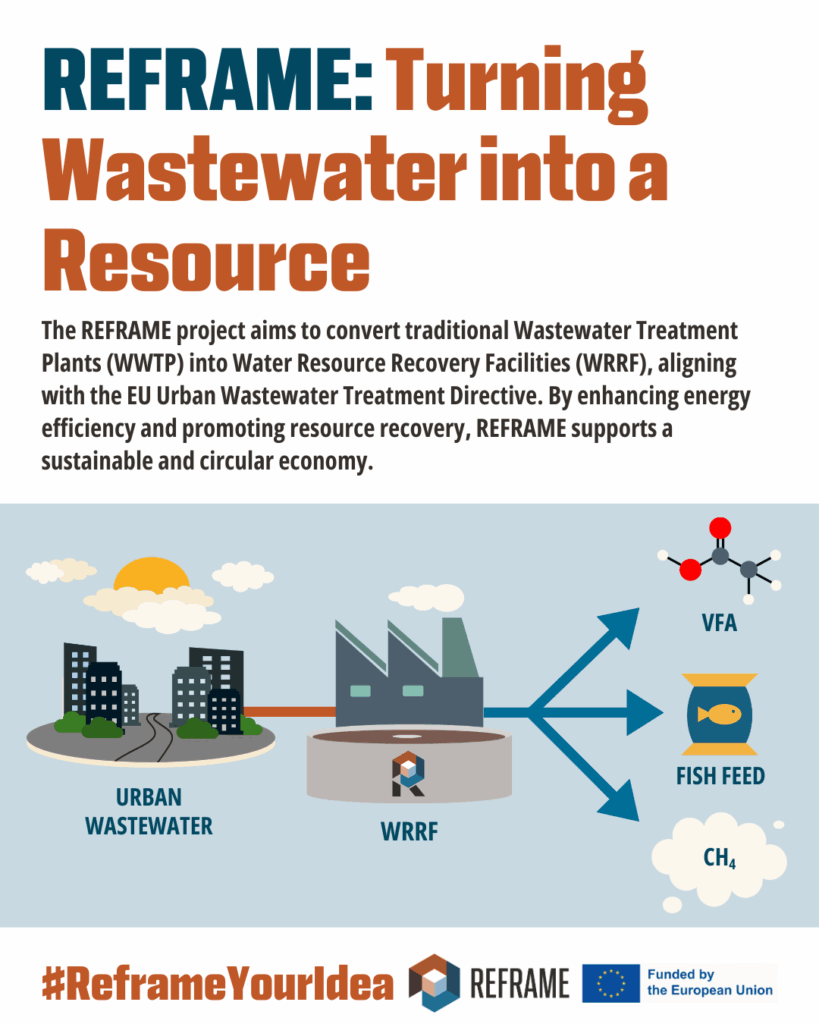REFRAME: turning wastewater into a resource
 In response to the new EU Urban Wastewater Treatment Directive, the REFRAME project is working to transform traditional Wastewater Treatment Plants (WWTPs) into Water Resource Recovery Facilities (WRRFs).
In response to the new EU Urban Wastewater Treatment Directive, the REFRAME project is working to transform traditional Wastewater Treatment Plants (WWTPs) into Water Resource Recovery Facilities (WRRFs).
Our mission aligns with several key articles of the directive, including Art. 11, and Arts. 14, 15, and 20.
🔋 1. Boosting Energy Efficiency
How can REFRAME help reduce energy consumption in WWTPs?
By exploiting an innovative filtration stage at the head of the treatment line, right after mechanical screening, we can recover cellulosic primary sludge (CPS) from incoming wastewater. This simple yet powerful change allows us to:
– Lower the organic load entering the biological treatment phase;
– Reduce aeration needs, which can account for up to 70% of total energy use in WWTPs;
– Cut operational costs (energy, maintenance, and sludge disposal).
🧪 2. Resource Recovery from CPS
We’re also developing a hybrid biological system, controlled via oxidation-reduction potential (ORP), for the production and purification of platform chemicals (VFAs-volatile fatty acids), biopolymers (PHAs-polyhydroxyalkanoates) and ingredients for animal feed (SCPs-single cell proteins).
This aligns with the directive’s vision for integrated water management and a circular economy (Arts. 15.3a, 14, 15, 20).
♻️ REFRAME is redefining wastewater treatment: from discharge to recovery, from energy-consuming to energy-smart.
👉 Keep up to date with our profiles to find out more about the innovative processes developed within the REFRAME project.
#ReframeYourIdea #WastewaterTreatment #ResourceRecovey #EnergyEfficiency #ScienceForEveryone
